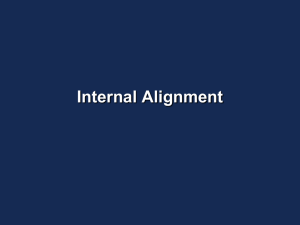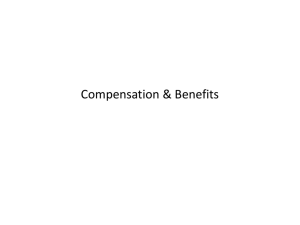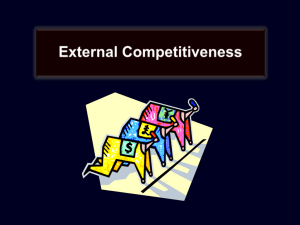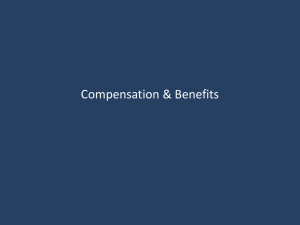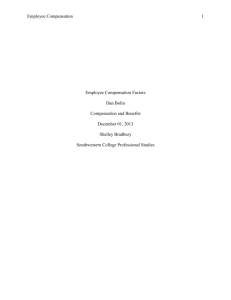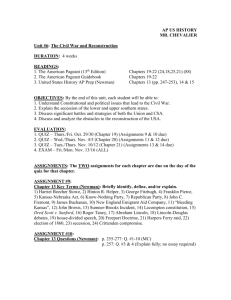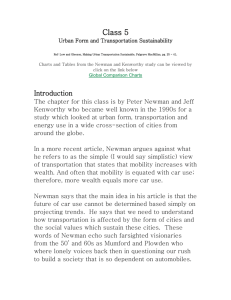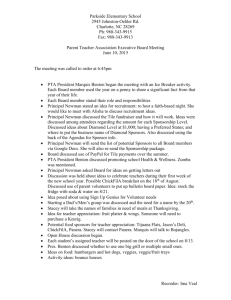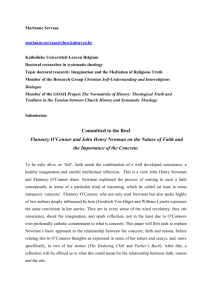Pay Structures
advertisement
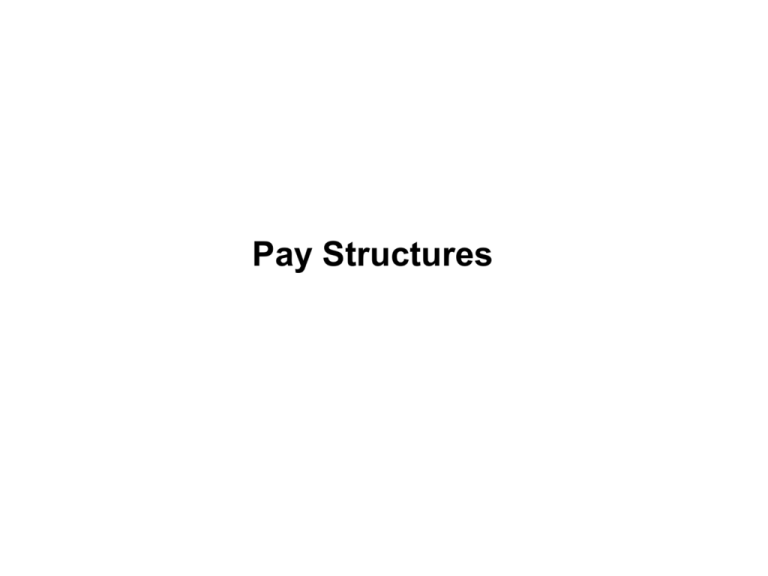
Pay Structures Balancing Internal and External Pressures: Adjusting the Pay Structure External Pressures Internal Pressures Job Structure Pay Structure (Milkovich & Newman, 2008) Combine Internal Structure and External Market Rates Two parts of the total pay model have merged – Internally aligned structure - Horizontal axis – External competitive data - Vertical axis Two aspects of pay structure – Pay-policy line – Pay ranges (Milkovich & Newman, 2008) Construct a Market Pay Line A MARKET LINE links a company's benchmark jobs on the horizontal axis with market rates paid by competitors on the vertical axis. It summarizes the distribution of going rates paid by competitors in the market Approaches to constructing a market pay line – Free hand approach – Regression Analysis Scatterplot 7 6 PAY 5 (Survey monthly Salary in $000) 4 3 2 1 80 120 Adapted from Irwin/McGraw-Hill 160 200 240 280 Our Job Evaluation Points 320 © The McGraw-Hill Companies, Inc., 1999 360 Exhibit 8.16: Understanding Regression (Milkovich, Newman, & Gerhart, 2011, p. 263) Pay Grades & Pay Ranges A PAY GRADE is a horizontal grouping of different jobs that are considered substantially equal for pay purposes. Grades enhance organization’s ability to move people among jobs within a grade with no change in pay. Adapted from Irwin/McGraw-Hill • • A PAY RANGE is a vertical dimension of the pay structure. Each pay grade will have associated with it a pay range consisting of a midpoint and a specified minimum and maximum. © The McGraw-Hill Companies, Inc., 1999 Exhibit 8.17: Develop Pay Grades (Milkovich, Newman, & Gerhart, 2011, p. 265) Exhibit 8.18: Range Midpoint, Minimum, and Maximum (Milkovich, Newman, & Gerhart, 2011, p. 268) Exhibit 8.19: Range Overlap (Milkovich, Newman, & Gerhart, 2011, p. 269) Grades and Ranges: Why Bother? Offer flexibility to deal with pressures from external markets and differences among firms – Differences in quality among individuals applying for work – Differences in the productivity or value of these quality variations – Differences in the mix of pay forms competitors use (Milkovich & Newman, 2008) Grades and Ranges (cont.) Typical range spread – Top-level management positions – 30 to 60% above and below midpoint – Midlevel professional and managerial positions – 15 to 30% above and below midpoint – Office and production positions – 5 to 15% above and below midpoint (Milkovich & Newman, 2008) Broad Banding Purposes – Provide flexibility to define job responsibilities more broadly – Foster cross-functional growth and development – Ease mergers and acquisitions (Milkovich & Newman, 2008) Exhibit 8.20: From Grades to Bands (Milkovich, Newman, & Gerhart, 2011, p. 270) Pay Compression Results when wages for those jobs filled from outside the organization are increasing faster than the wages for jobs filled from within the organization As pay differentials among jobs become very small, the traditional pay structure becomes compressed Compression is an issue in professional work when new graduates command salaries almost equal to those of professionals with 3 - 5 years experience Adapted from Irwin/McGraw-Hill © The McGraw-Hill Companies, Inc., 1999
